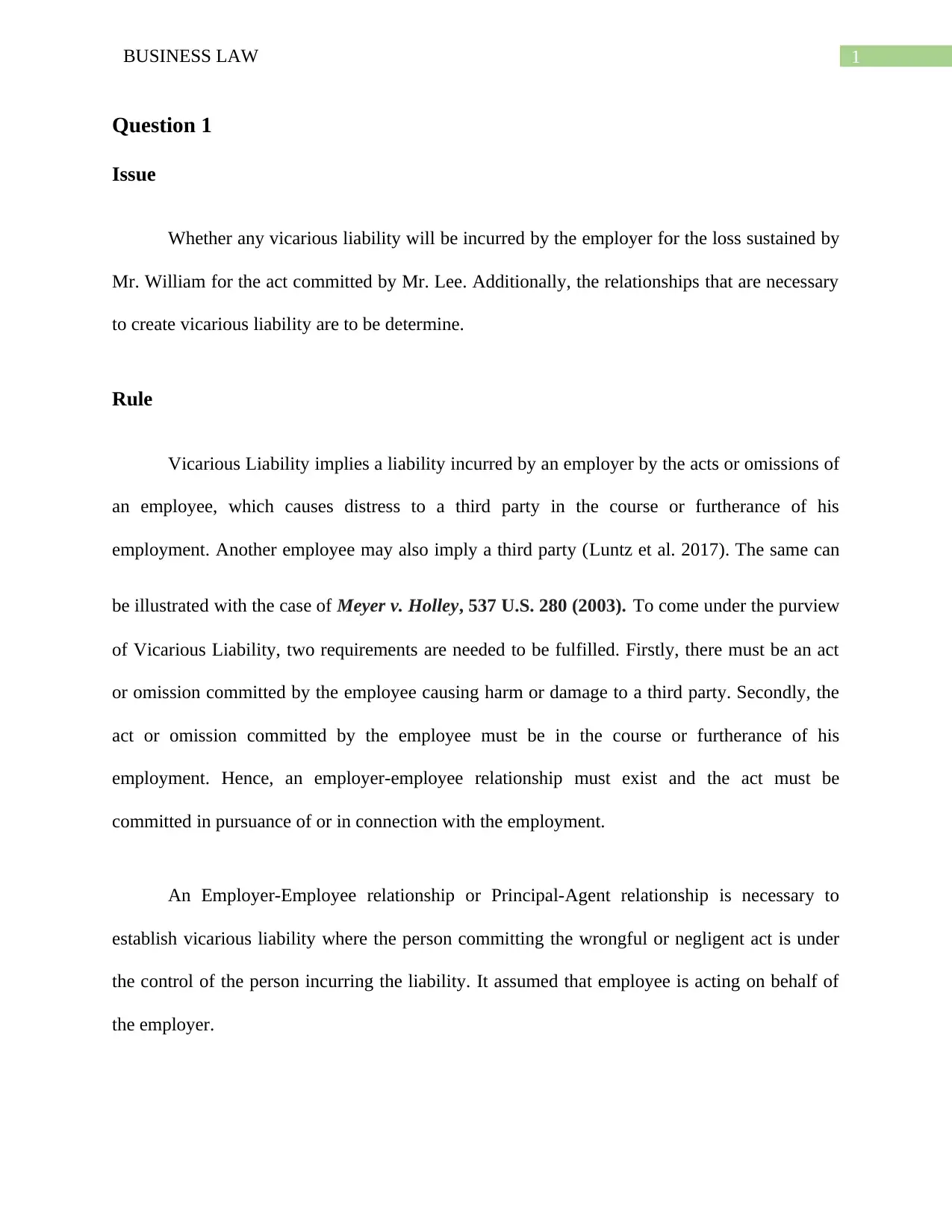Business Law Case Study: Examining Vicarious Liability & Trademark Law
VerifiedAdded on 2023/04/19
|7
|942
|268
Case Study
AI Summary
This case study delves into two distinct legal issues within a business law context. The first issue examines whether an employer incurs vicarious liability for the reckless actions of an employee that resulted in injuries to another employee. It analyzes the necessary conditions for vicarious liability, focusing on the employer-employee relationship and whether the employee's actions were within the scope of their employment. The study concludes that the employer is not vicariously liable because the harmful act was outside the scope of employment. The second issue concerns an alleged trademark infringement, specifically whether the Milwaukee Bucks infringed on Jagermeister's trademark. The analysis identifies the courts with jurisdiction over trademark disputes and applies relevant criteria from US Court of Appeal rulings to determine if infringement occurred. The study finds that while there are similarities between the logos, they do not meet the criteria for trademark infringement, and Jagermeister's claim is likely baseless. Desklib provides students with access to similar solved assignments and past papers to aid in their studies.
1 out of 7








![[object Object]](/_next/static/media/star-bottom.7253800d.svg)